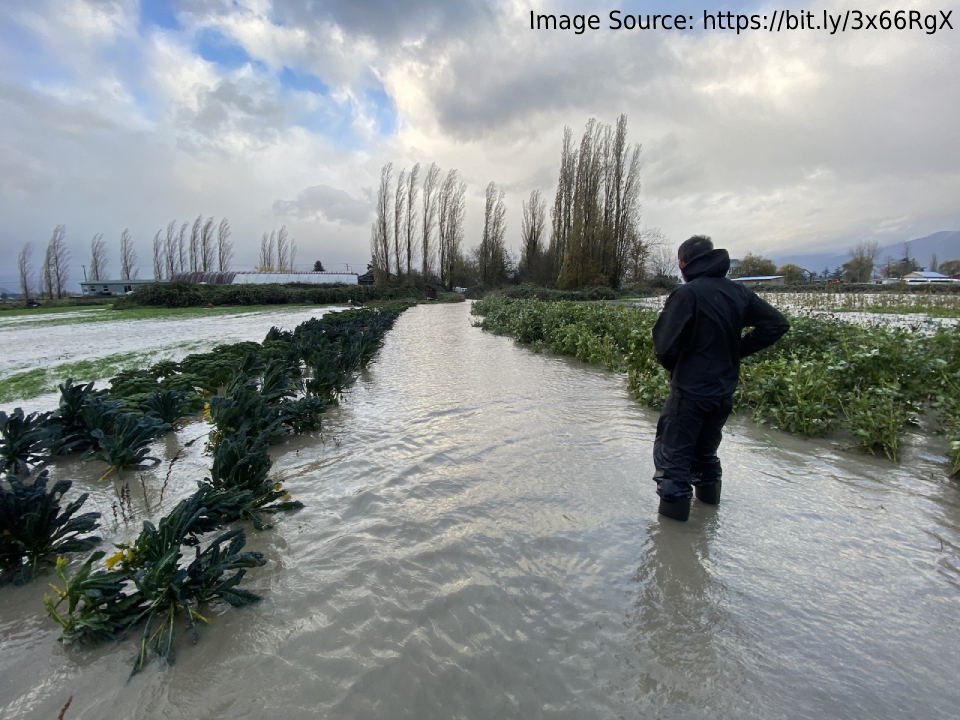In our last blog post, we discussed the importance of soil microflora and how it is affected by flooding and stagnant water in your fields. As certain areas may still be experiencing flooding, some of you might be wondering, how can you manage your field for seeding after it was heavily flood damaged? In this week’s edition of Growing Possibilities, we will discuss 3 tips that you should be aware of to manage your flooded fields.
Firstly, before performing any revitalization process, ensure that there is little to no water on your field. Flood water must either drain naturally or percolate in the ground (1). Natural drain paths leading away from your fields can help significantly, though be aware, rapid removal of water may cause complications in the soil. Erosion can occur due to the soil getting carried away in flood water; gullies and or gaps in your fields are a result of this soil loss (2).
Second, remove sediments from the soil, such as dead plant material and/or any other debris that may be found post-flooding. You can mix dead plant material into your soil if plant root growth does not exceed more than 1 inch (1). You may want to consider burning any other leftover plant material in the soil that may have longer root depth; the ashes can be mixed into the soil, but higher carbon-based plant material can reintroduce significant amounts of carbon. This will halt nitrogen fixation for some time as the remaining microbes will use nitrogen to break down the carbon. (3). At this stage, tilling and land leveling can be performed, as this will reform the soil structure that was lost to erosion.
Third, test your soil for factors such as pH and other nutrients like carbon, phosphorus, nitrogen, etc. to see if your soil will be suitable for seeding (4). Soil testing samples should not be taken immediately after your soil has dried; instead, wait for the soil to be aerated by land leveling or tilling (4). This aeration will affect the chemical changes within microbes and for certain nutrients, such as phosphorus. It is important to remember that the reintroduction of nutrients is crucial for post-flooded soil, such as for reintroducing arbuscular mycorrhizae (AM) into the soil, which is a beneficial fungus that grows on the roots of plants and provides phosphorus through a symbiotic relationship (2). Once able, cover crops are not only a great way to prevent any wind-based erosion (3, 2), but they also promote regrowth for any microorganisms left within your soil (4).
These are just some tips to keep aware of when trying to manage your fields after flooding. Other considerations can be made as well, such as when planting cover crops like soybeans or legumes, a nitrogen-fixing inoculant should be used to reintroduce microbes within the soil and ensure nodulation for your crops (4). Post-aeration, consider using products like XiteBio® SoyRhizo® for soybean crops or XiteBio® PulseRhizo® for pea, lentil, faba, and other pulse crops to naturally reintroduce microflora, creating a more revitalized soil with healthier plants and better yields.
References:
- https://texashelp.tamu.edu/wp-content/uploads/2016/02/E522-soil-testing-following-flooding.pdfl
- https://www.soils.org/files/science-policy/caucus/briefings/farming-after-flood.pdf
- https://www.morningagclips.com/tips-to-repair-flood-damaged-fields/
- https://crops.extension.iastate.edu/cropnews/2019/03/management-considerations-post-flooding-soil


